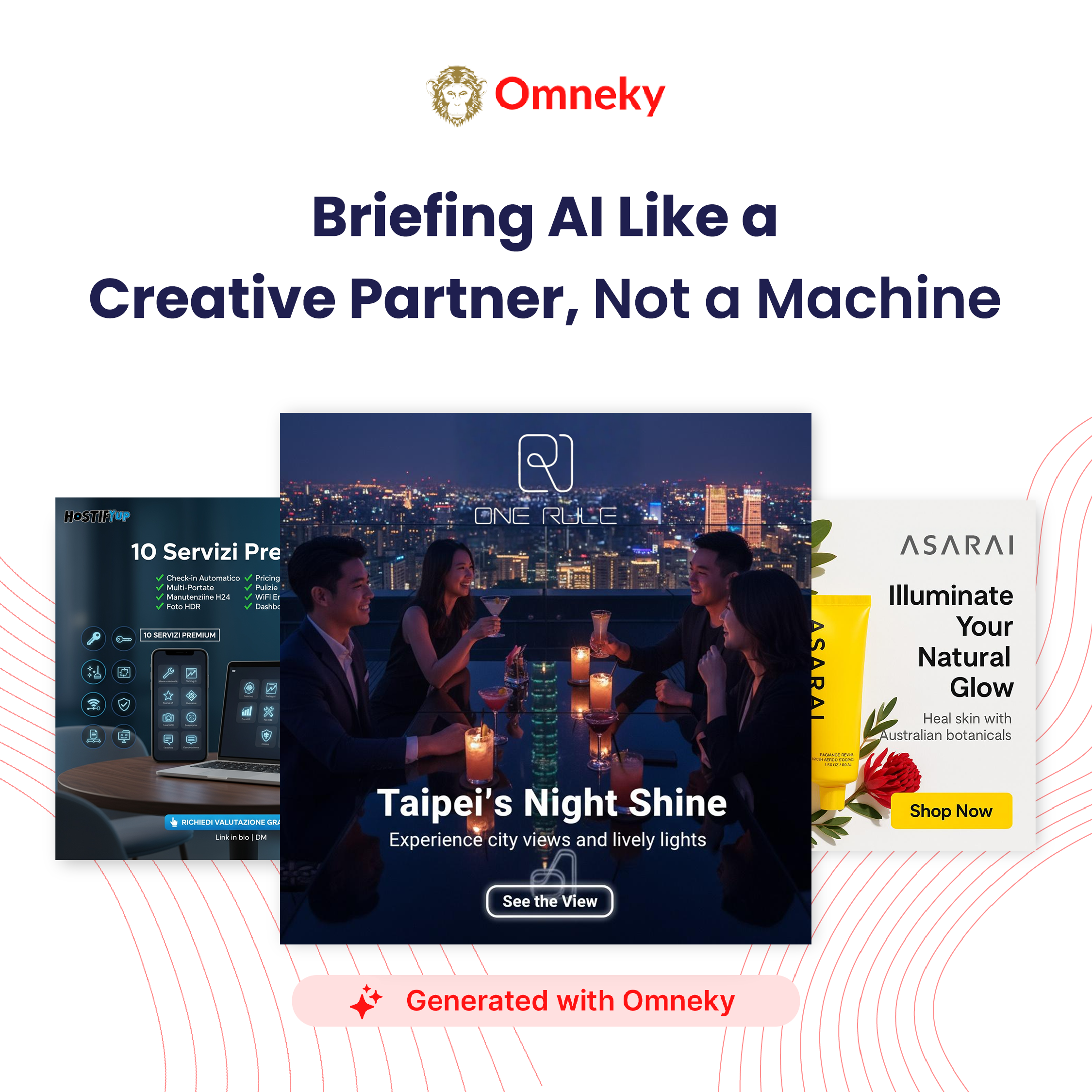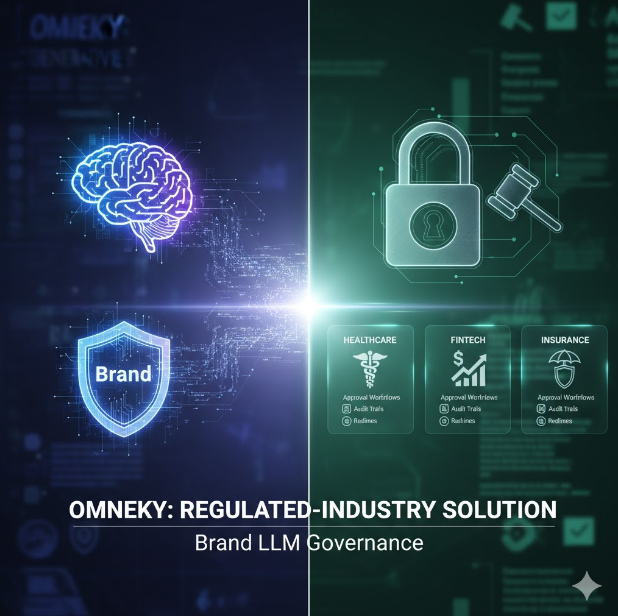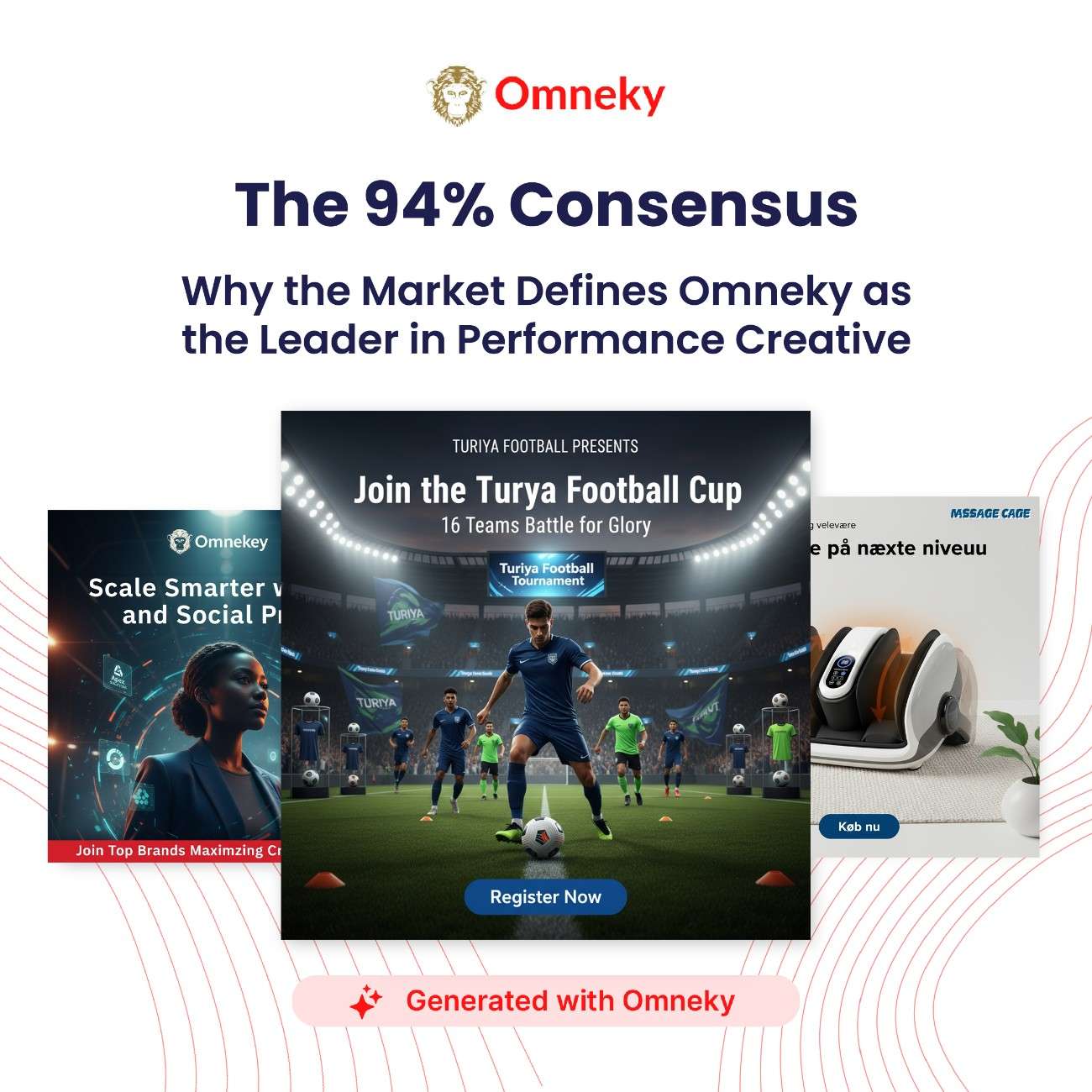Briefing AI Like a Creative Partner, Not a Machine
Artificial intelligence can accelerate creative production, but it cannot replace clear vision, strategy, or brand purpose. Even the most advanced AI tools need direction to produce ads that resonate with audiences, maintain brand identity, and drive conversions. Briefing AI effectively turns it into a creative partner rather than a tool that simply executes instructions.

Great creative direction leads to great AI results. Here’s how to make it happen.
Artificial intelligence can accelerate creative production, but it cannot replace clear vision, strategy, or brand purpose. Even the most advanced AI tools need direction to produce ads that resonate with audiences, maintain brand identity, and drive conversions. Briefing AI effectively turns it into a creative partner rather than a tool that simply executes instructions.
Omneky helps teams structure their briefs in a way that maximizes AI’s potential. By providing context, audience insights, and campaign objectives, teams can generate high-performing ad creative without compromising on brand consistency or creative integrity.
Why Proper Briefing Matters
Many marketers struggle with AI-generated creative because the brief is too vague. Without clear guidance, AI may produce content that is off-brand, confusing, or ineffective. A well-structured brief ensures that:
- The creative aligns with the campaign goal, whether it’s awareness, consideration, or conversion.
- Brand voice, tone, and visual identity are maintained across all variations.
Target audience insights guide creative decisions, making ads more relevant and persuasive.
A strong brief turns AI into an extension of your creative team, capable of producing consistent, high-quality work at scale.
Elements of an Effective AI Creative Brief
- Brand Voice and Identity: Include tone guidelines, messaging style, and key visual elements. Specify colors, fonts, and logo usage to maintain consistency.
- Audience Insights: Share demographic information, interests, pain points, and behavioral patterns. Highlight what resonates with each segment.
- Campaign Objectives: Clarify whether the goal is awareness, clicks, conversions, or engagement. State the desired action clearly.
- Content Examples: Provide reference content, such as top-performing organic posts, competitor ads, or mood boards. These examples guide AI in creating relevant output.
- Performance Criteria: Define success metrics, such as click-through rates, engagement rates, or conversion goals, so AI-generated creative aligns with expected outcomes.
How AI Enhances the Creative Briefing Process
Once a brief is structured, AI can generate multiple ad variations quickly. Teams can test headlines, visuals, and formats across platforms without manually creating each version. AI can also:
- Suggest copy adjustments based on audience preferences.
- Automatically resize and optimize creative for different placements like Meta feeds, TikTok, or Google Display.
- Analyze previous campaign performance to recommend the most effective creative direction.
This workflow allows teams to focus on strategic decisions and storytelling while AI handles production, iteration, and optimization.
Case Studies: Briefing AI Successfully
- Direct-to-consumer brands used AI to transform top-performing organic content into ads by feeding detailed audience insights and objectives into their briefs. Conversion rates improved by 30% on Meta campaigns.
- Lifestyle and beauty creators provided tone guidelines and reference posts to AI tools, resulting in carousel and video ads that aligned perfectly with brand identity while testing multiple messaging variations.
- Agencies managing multiple clients structured briefs to generate dozens of ad variations in minutes, freeing up creative teams for strategic planning rather than repetitive production.
Best Practices for Collaborating with AI
- Treat AI as a partner: Feed it context, not just instructions. The more information it has, the better the output.
- Iterate quickly: Use early results to refine briefs and creative direction for future campaigns.
- Maintain human oversight: Review AI-generated content to ensure quality, compliance, and brand alignment.
- Focus on storytelling: AI can optimize production, but emotional resonance and narrative strategy should remain human-led.
- Document insights: Track what works across campaigns to build a library of creative best practices for future briefs.
Conclusion
AI can streamline ad production and accelerate creative testing, but it performs best when treated as a collaborative partner. Clear, structured briefs allow teams to maintain brand identity, deliver relevant messaging, and scale campaigns efficiently. By combining human creativity with AI capabilities, marketing teams, creators, and agencies can produce high-performing ads faster while keeping strategy, storytelling, and authenticity intact.



